If you have ever played an electric guitar, there is a high chance you experienced problems with sustain. Of course, these problems are rare with high-quality gear, but if you are unwilling to buy yourself a new guitar, there are a couple of things you can do.
I will focus here on modifications and improvements that you can do on your own guitar that can improve sustain to a certain degree.
Get An Effect Pedal
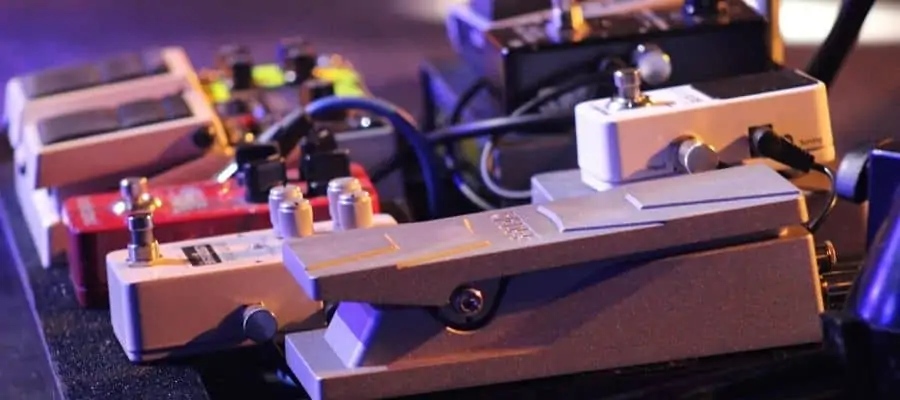
Probably the easiest way to modify the sound of your instrument is by using the effect pedals. With high-quality gear, you will have an easier time finding the tone you like, and making your guitar sound “expensive,” even if it wasn’t.
If you are experiencing problems with sustain, you can get one of many pedals available on the market. Moreover, if sustain is your only problem, you should try one of the sustain pedals that are available on the market.
For example, Boss is one of the most popular brands for guitar effect pedals, and they have CS-3, which is a compressor and sustainer.
To help you find the best sustain pedal that suits your need I summarized all of the best in my post Top 10 Guitar Sustain Pedals For A Longer Tone & How To Use Them
It mostly depends on the type of music you play. For heavier genres, you can get more sustain with a higher gain. The lower the output, the less sustain you’ll have, and it will be rather challenging to have great sustain while playing on the clean channel.
Unless you are willing to buy an expensive guitar. Among the most popular pedals that can help you with sustain are fuzz, distortion, and overdrive. Of course, if you don’t want to get a pedal for sustain only.
Clean Your Guitar

Properly cleaning your guitar after each playing session is one of the essential parts of maintenance. It is the easiest and safest way to prolong the life of your strings and make your instrument sound wonderful.
If you are experiencing problems with sustain, this is something you might want to try. Dirt and grime can accumulate on both strings and frets and prevent the string from vibrating. This means that each string will have less “freedom” to vibrate and create sound, which will result in lower sustain.
The most common problem with dirty guitar is dull-sounding notes and lower sustain. To properly clean your guitar, you can use string cleaners and conditioners that will bring life to your strings (and fretboard) and make everything better.
if you want to learn more about cleaning and maintaining your guitar, check out my post How To Clean An Electric Guitar – 10 Easy Steps
Naturally, this is something you should do whenever you play the guitar, and you should at least wipe it after each session. For fretboard oils, you don’t need to condition the wood after each session, and once a year is more than enough.
It is worth mentioning that your sustain problems might not have anything to do with the condition of your guitar, but you will still feel a lot better playing clean guitar and it will make it sound better.
Put A New Set Of Strings
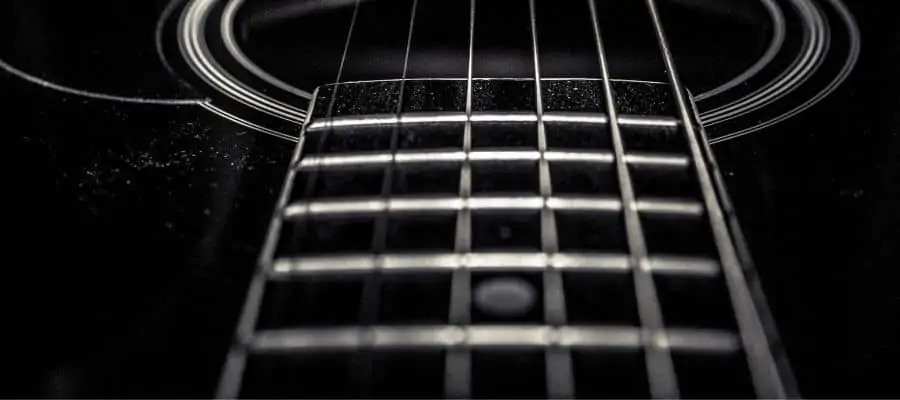
Cleaning will only get you so far, and it is undoubtedly something you should do as often as possible. But sometimes, strings are so damaged that they will lose their mechanical properties and will be in need of a replacement.
Whenever you put a new set of strings, it will start stretching and each note you play will shorten its lifespan. Naturally, this is something that happens with any type of strings, and sooner or later, you will need to replace them.
Many professional musicians change their strings at least once a week, and some go as far as to change them every day. But as long as you are not touring daily and playing the guitar for a living, once per month will be more than enough.
if you are looking for the best electric guitar strings you can find out my recommendation in the following post Best Electric Guitar Strings – How To Choose & Change Them?
When it comes to sustain, strings will play an important role. In essence, every place that string touches on the guitar, can diminish the tone quality and sustain. Moreover, the string itself can be damaged after a while, and lose its mechanical properties.
So, if you are experiencing sustain problems, and cleaning your guitar didn’t help, you might want to consider getting a new set of strings. After all, strings are something you should change as often as you can afford, or at least, as soon as they start making it difficult for you to play.
Adjust Pickup Height Or Change Them
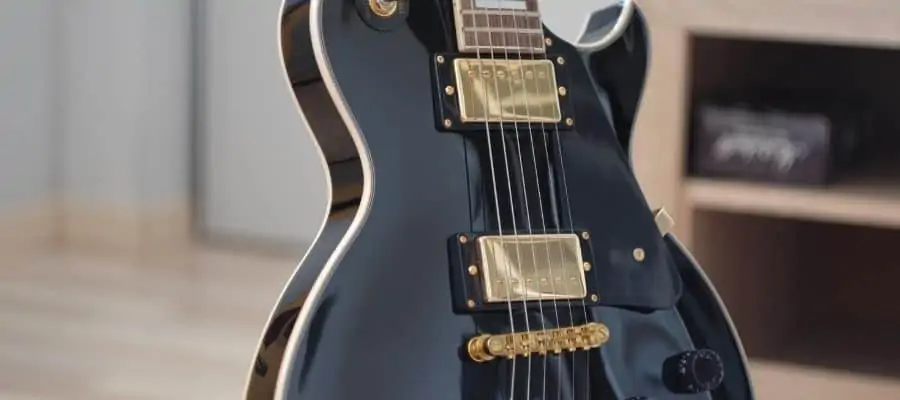
As you already know, vibrations of strings create a disturbance in the magnetic field created by the pickups. Whenever you pluck a string, a small current will generate in the windings of the pickup, and it will allow you to amplify the sound using a speaker or the amp.
First, you can always use the screws holding the pickup in the place to adjust its height. This will improve the sustain and slightly increase the volume. However, if you set it up to high, you might have some problems with the tone quality and buzz.
On the other hand, some pickups are simply designed with another goal in mind, and it will be quite challenging to have incredibly long sustain without pedals or high-gain amplifiers.
This means that you should take your pickups into consideration and understand whether it is even possible to achieve something like this with your existing configuration. Of course, if the sound is dull and dies a second or two after you pluck a string, the problem is most likely elsewhere.
For all of you who just love having a great sustain, you can always check out something like a Sustainiac system that is designed by Schecter. The company claims that with it, you will get an infinite sustain for your guitar.
Adjusting The Tuners

The string starts on the bridge and ends on the tuners. As you can probably guess already, tuning machines are rather important. Not only that they keep your instrument in tune, but they also play a role in sound quality and sustain.
If your tuners are damaged or loose, it will allow the string to move even more, which is a waste of energy. Instead of vibrating for as long as possible, the loose tuner will diminish the sustain and ruin the sound of your guitar.
Checking the tuners is quite easy. Assuming that you don’t have problems staying in tune, all you need to do is try to move them around. Each of the tuning pegs should be fixed (while the strings are on), and there shouldn’t be any movement.
If you want to improve your tuners you may want to consider locking tuners. are you interested to know more? check out my post Everything You Need To Know About Guitar Locking Tuners – 13 Q&A
However, if any of the tuners are loose, all you need to do is tighten them, and it will make a world of difference. You will be able to check this only when the string is loose.
On some guitars, you can find locking tuners that come with a locking nut. Usually, this combination is with Floyd Rose, but you can find locking tuners for any model of the guitar.
The idea behind these tuners is to keep the instrument in tune no matter what. As a result, it will also help you increase the sustain of your guitar. But even if you dislike the locking tuners, you can always get a regular one or try to improve the tuners you already have.
Either way, tuners are among the most important parts of your instrument and you should ensure that they are in perfect condition.
Replace The Frets

You are probably aware that frets are made of metal. What happens when you play the guitar is you press the string on the fret and it keeps rubbing on it whenever you do a vibrato or even play a single note.
As a result, the metal on metal rubbing will cause the fret to deteriorate. With enough playing, the frets will become so worn out that you would be unable to get a clear sound from the note.
Most players have their own patterns and habits, and usually, frets are worn out on the places you use the most. This can cause the string to buzz if you have a lower action. Buzzing is caused by string hitting a different fret while vibrating, and it can prevent it from vibrating as freely as possible.
This means that you will need to either file the problematic fret or completely refret the guitar. Now, this might seem scary, but regretting is not something you’ll need to do every month or even year.
If you are interested to know how much does it cost to refert the whole guitar or is it worth it at all. you can check out my post How Much Does It Cost To Refret A Guitar? Is It Worth it?
Frets will wear out after years of playing, and it is based on the amount of practice you have every day. If you play a single guitar every day, for years, you might need to replace frets with new ones.
While the process of refreting is quite simple, you will still need appropriate tools and skills to do it, so it might be best to leave it to a professional to avoid damaging your guitar. Either way, if you own a guitar for a while, your sustain problems might be due to used frets.
Change Your Bridge Or Tremolo Block Or Adjust It
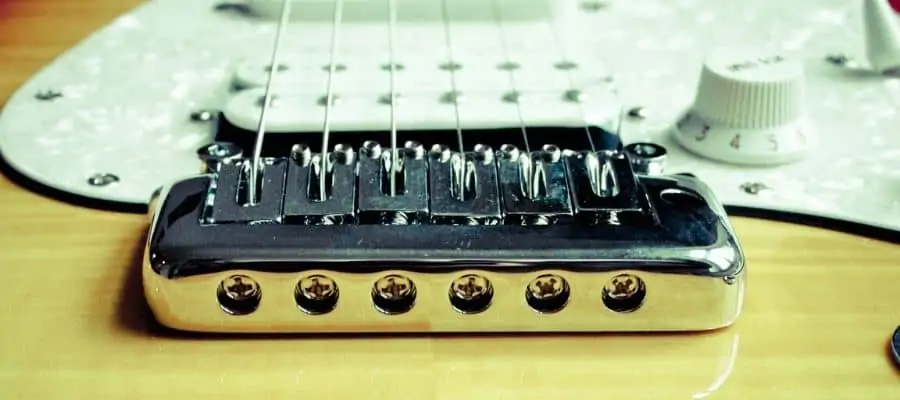
As you all know, the bridge is a part of the guitar holding one end of the strings. Based on the guitar, you will have either a version of a fixed bridge or tremolo. Either way, the bridge can cause problems with sustain.
I already mentioned that each part of the guitar that touches strings can be a reason for bad sustain, and the next thing you should check is the bridge. Now, with fixed bridges like on Les Paul, there is a lower chance that it would have an impact on the sustain.
However, a bad bridge can still destroy your strings, and force you to change them more often than usual.
On the other hand, tremolo bridges and Floyd Rose ones can have a significant impact on the tone and sustain.
If you are willing to invest a bit, you can always change your bridge or block bridge to a harder material like Brass, which will improve the overall quality of the instrument and the sustain.
But you can also block the tremolo to avoid diminishing the notes you play. Probably the most famous person that loves blocked tremolo is Eric Clapton. On his guitar, there is a piece of wood that prevents the tremolo block from moving and keeps it in place. As a result, you will notice a significant improvement in the sustain.
However, the main problem with blocked tremolo is that you won’t be able to use tremolo or whammy bar at all. For some players, this might not be a deal-breaker, but others might dislike the idea of having their tremolo become obsolete. Finally, you could try and find saddles made of harder materials and replace only that part of the tremolo system.
Change Your Guitar Nut

The nut on the guitar is located at the end of the neck where the headstock begins. It is used to keep the strings in place and guide them to the tuners. Many years ago, nuts were made from the bone, but over the years, the companies switched to using synthetic bone since it has the same properties without harming animals.
On low-end guitars, the manufacturers often use plastic or other cheap materials instead, and it can diminish the tone quality of your instrument. If you have a guitar with a cheap or bad nut, you should consider replacing it.
It is not as expensive as changing the pickups or buying a new tremolo, and it will have a significant impact on your sustain.
Some might even suggest making your own nut, but it might prove to be pointless on inexpensive guitars. However, if you love the guitar you own, and you want to improve its sound and quality, the nut is a great place to start.
Use The Vibrato Technique

Many beginners forget about focusing on their vibrato skills and it is among the most important techniques you can use in guitar playing.
The first and most obvious reason is quality. Playing the same note with and without the vibrato will make the world of difference. The solo you play will sound richer, more emotional, and fuller.
But it will also allow your guitar to “age” naturally. As I already mentioned, when you play notes, the frets will get worn out. But with vibrato, they will show signs of use across the whole surface, and you will avoid having holes in your frets.
Furthermore, by filing down each fret while playing, you will also avoid buzzing since each fret will be used equally. Of course, this is something that you will start doing overtime with enough practice.
More importantly, you will be able to increase sustain. It is probably the easiest way to artificially increase the sustain of your notes. If you play a single note without the vibrato, it will die out quickly, especially if you don’t use enough gain.
But with vibrato, you’ll be able to increase its duration and make it sound even better. It is a nice technique to learn, and it will significantly improve your playing skills.
Adjusting The Amplifier Settings
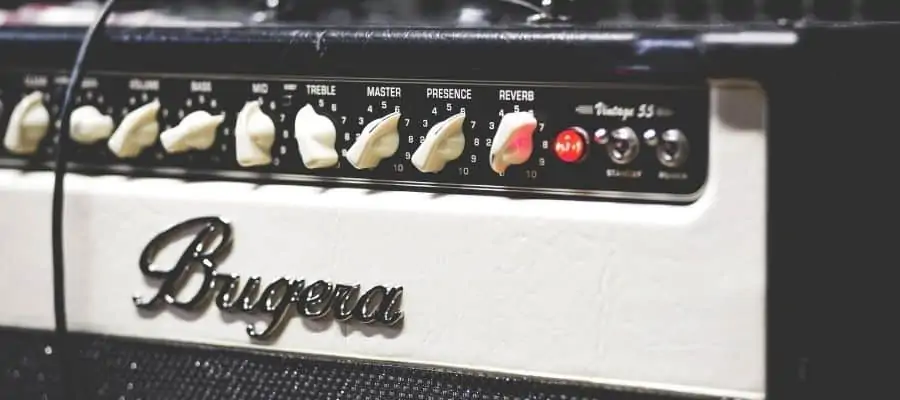
Many players tend to forget how important the amplifier is. Or rather, the impact it has on the sound. With a good, expensive amp, you will be able to create an incredible sound even if you have a cheaper guitar.
Similar to how you can use pedals to improve sustain and overall sound quality, you can adjust it using the amplifier.
Moreover, the distance from the amp, the speaker, and volume will all play a part in the sound quality and sustain. Naturally, the higher the volume, the more sustain you’ll have. But you can also experiment with potentiometers, equalizers, drive, and everything else your amp has to offer.
Based on your amp, you will have to do your own tweaking to find the sound that works for you the best. Each player has their own preferences, and there are no rules to how you should turn knobs and which is the most optimal setting.
So, feel free to experiment and see what sounds best. The most important part is probably the genre you’re playing, and if you love something with more gain, you will have an easier time increasing the sustain.
On the other hand, if you play on the clean channel, you will have to rely on the quality of wood, pickups, speakers, and everything else I mentioned before. Getting a good amplifier is always a smart investment, and you will have an easier time finding the tone you’ll enjoy.
Summary
For electric guitars, sustain is something that can be quite important, especially if you are into heavier genres. There are a couple of ways to increase the sustain on your guitar, without buying a new one.
Firstly, you should understand that every part of the guitar that the string touches can have an impact on the sustain. This includes the bridge, neck, frets, nut, tuners, and even pickups.
If any of these parts are damaged or low-quality, you might want to replace them or modify them to make them work. Other than that, amplifiers and pedals can do a great job improving the sustain of your instrument.
If you found this article useful, you may want to save this pin below to your Guitar board.

Recent Posts
Some guitarists insist on buying an expensive amplifier with their electric guitar. They assume that this is a must for every type of guitarist out there. However, in some situations, this isn’t...
Top 50 Free Realistic Guitar VST Plugins With Sound Examples
As technology has rapidly advanced in the recent decade, computers are stealing more and more roles from physical musical instruments and accessories. Nowadays, you do not need expensive amps,...

